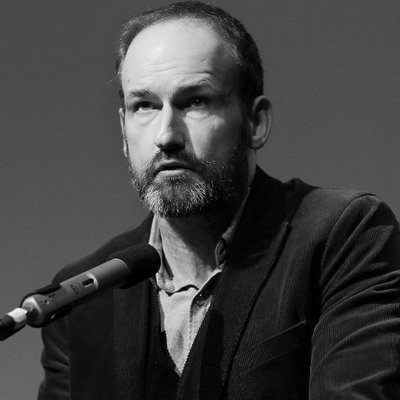The tragedy of Afghanistan: UK troops withdraw, what’s left behind?
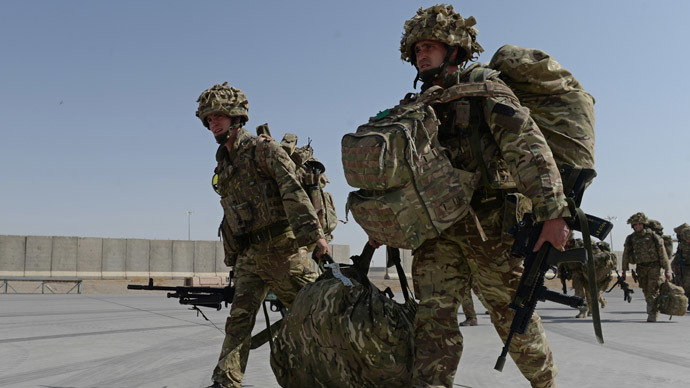
As British military forces finally leave Afghanistan after 13 years of conflict, which left 453 British troops dead and 3,000 wounded, the curtain comes down on one of the most futile, incompetent, and inglorious conflicts fought in recent history.
The balance sheet shows that far from helping the transition of Afghanistan from backward state plagued by violence and warlordism into a beacon of liberty and democracy, the British and US military presence failed to prevent it being labelled one of the three most corrupt countries in the world in 2013, along with North Korea and Somalia. It also failed to stem the upsurge in heroin production, which has risen to the point where three quarters of the entire world’s production of the drug now takes place in Afghanistan.
The common depiction of Afghanistan in the West is of a barbarous, primitive and backward country, irredeemably corrupt with a largely illiterate population. It was this characterization which allowed the Afghan people to be so easily dehumanized as part of the process of gaining the support and acquiescence of public opinion in the West for the war that was unleashed against them in the wake of 9/11.
Yet there was a period in Afghanistan’s tumultuous history when a determined effort to lift the country and its people out of backward agrarian feudalism and develop the country’s economy was attempted. The failure of that attempt was directly linked to the recent conflict waged by Britain and the US, and provides yet another salutary lesson into the role of Western intervention and imperialism as a major destabilizing factor throughout the developing world.
The communist People’s Democratic Party of Afghanistan (PDPA) was formed in 1965 in opposition to the autocratic rule of the country’s then King Zahir Shar. They helped to overthrow the regime in 1973 in a coup led by Mohammed Daud, the king’s cousin. In the years following Daud sought to distance himself from the PDPA and from the Soviet Union, which was Afghanistan’s biggest trading partner and source of aid throughout the 1970s. In 1978, when Daud’s intention to purge the army of its communist officers and cadre became known, he fell victim to a coup staged by the PDPA with support from the Afghan army.
The coup enjoyed popular support in the towns and cities, evidenced in reports carried in US newspapers. The Wall Street Journal, no friend of revolutionary movements, reported at the time that, “150,000 persons marched to honor the new flag and the participants appeared genuinely enthusiastic.” The Washington Post reported that, «Afghan loyalty to the government can scarcely be questioned.”
Upon taking power, the new government introduced a program of reforms designed to abolish feudal power in the countryside, guarantee freedom of religion, along with equal rights for women and ethnic minorities. Thousands of prisoners under the old regime were set free and police files burned in a gesture designed to emphasize an end to repression. In the poorest parts of Afghanistan, where life expectancy was 35 years, where infant mortality was one in three, free medical care was provided. In addition a mass literacy campaign was undertaken, desperately needed in a society in which ninety percent of the population could neither read nor write.
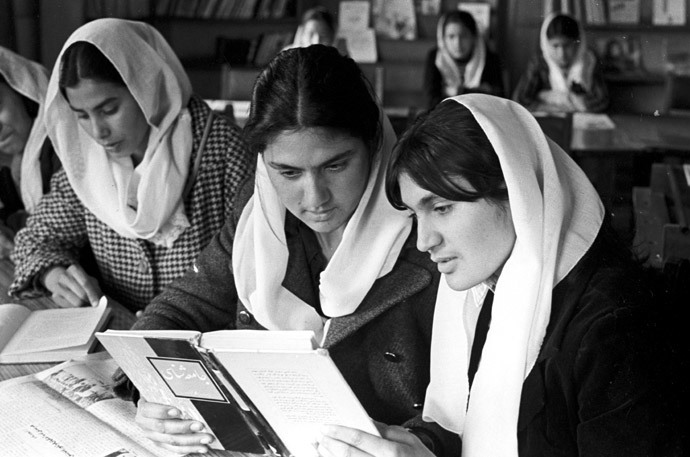
The resulting rate of progress was staggering. By the late 1980s half of all university students in Afghanistan were women, and women made up 40 percent of the country’s doctors, 70 percent of its teachers, and 30 percent of its civil servants. Australian journalist John Pilger relates the memory of the period in his book - ‘New Rulers of the World’ (Verso, 2002) - through the eyes of an Afghan woman, Saira Noorani, a female surgeon who escaped the Taliban in 2001. “Every girl could go to high school and university,” she is quoted. “We could go where we wanted and wear what we liked. We used to go to cafes and the cinema to see the latest Indian movies. It all started to go wrong when the Mujahideen started winning. They used to kill teachers and burn schools. It was sad to think that these were the people the West had supported.”
Be that as it may, the government’s crude attempt to impose its reforms on the countryside and dismantle the feudal structure which predominated there proved deeply unpopular, opening the door to US covert support and funding of opposition tribal groups. This covert support began under the Carter administration.
An initial $500 million was allocated to arm and train the rebels in the art of insurgency in secret camps set up specifically for the task across the border in Pakistan. This opposition came to be known as the Mujahedeen (those engaged in jihad), and so began a campaign of murder and terror which, six months later, led the Afghan government in Kabul to request the help of the Soviet Union in 1979. The ensuing military intervention by the Soviet Union lasted ten years at the cost of 15,000 dead and 35,000 wounded. Upon the departure of Soviet military forces, Afghanistan descended into an abyss of religious intolerance, abject poverty, “warlordism,” and violence.
The point is worth emphasizing, however – namely that contrary to the official Western history of the period, the Mujahedeen did not arise in response to a hostile Soviet invasion of Afghanistan, but rather the Soviet Union intervened at the request of the Afghan government in response to the instability being wrought by a US funded and armed insurgency.
To the question of why the US would arm, fund and train an insurgency comprising religious zealots in Afghanistan, the answer is the same reason successive US administrations have armed, funded and trained insurgents and death squads in any part of the world where progressive, secular and left-leaning governments and movements have attempted to institute social and economic justice: to halt the spread of a good example.
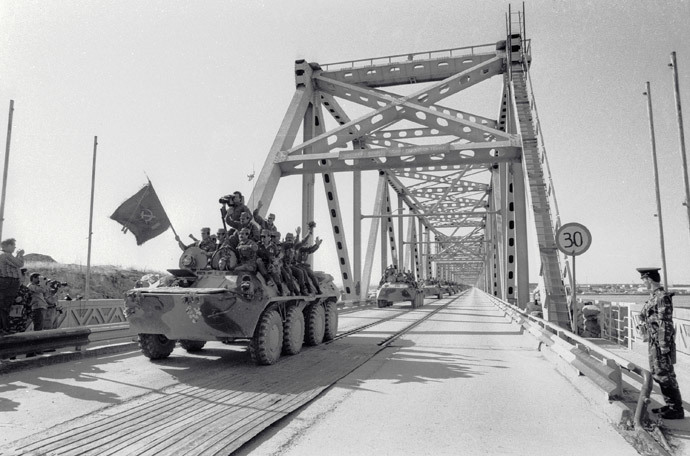
With the collapse of the Soviet Union in 1991, three years after the Soviets pulled out of Afghanistan, the US began a reach for global hegemony which continues to this day. With regard to Afghanistan in particular, just as with the rivalry between the British and the Russians back in the 19th century, its strategic location was the primary reason for the presence of Western troops.
The collapse of the Soviet Union meant that the huge deposits of crude oil located in the Caspian Basin were now up for grabs. What US and Western energy corporations required was a pipeline to transport this crude to the nearest friendly port from where it could be shipped out. Iran wasn’t an option, which left Afghanistan as the only viable alternative; with the proposed pipeline to pass through and on into Pakistan to the port of Karachi on the coast of the Arabian Sea.
In fact so important was this pipeline to the US that in 1996 a high level Taliban delegation flew to meet Unocal executives at their headquarters in Houston, Texas, to discuss its construction. The Governor of Texas at the time was none other than George W. Bush.
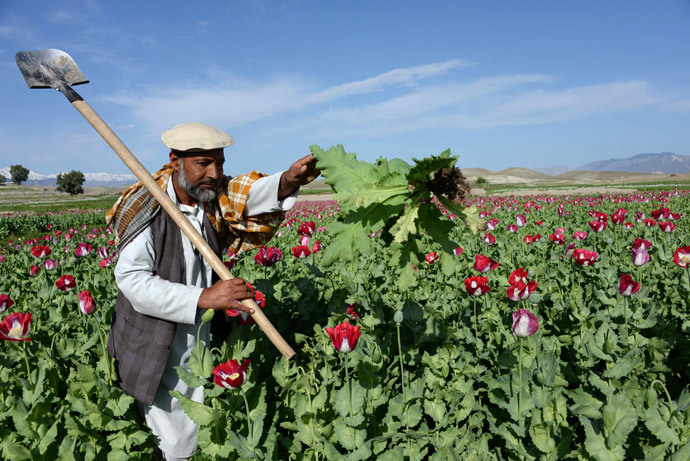
Despite ruling a country in which women were stoned to death for adultery, in which men were tortured and had their limbs amputated for misdemeanor crimes, in which music and television was banned, in which it was illegal for girls to attend school, these high-ranking representatives of the Taliban were given the red-carpet treatment, put up in a five-star hotel and even accorded a VIP visit to Disneyworld in Florida. However, after they left it was felt that they could not be trusted and the plan for the pipeline was shelved.
With 9/11 came the opportunity the US “oilocracy” had been waiting for to achieve their long-held desire for a pipeline through Afghanistan. It was an opportunity that undoubtedly added impetus to the invasion that was mounted to clear the country of former US allies like the Taliban and Osama Bin Laden. Thirteen years on, Afghanistan holds the onerous distinction of being one of the poorest, least developed, and most corrupt countries in the world; not to mention the largest producer of heroin. Add to this the fact that the writ of the government in Kabul does not run throughout the entire country and we are talking about a military and political disaster of monumental proportions.
For the families and loved ones of the British troops who lost their lives or were permanently maimed, the thousands of Afghans who were killed or maimed, many of them civilians, the past 13 years have merely confirmed that in a time of oppression and war politics can either be an affirmation of life or an alliance with death.
The statements, views and opinions expressed in this column are solely those of the author and do not necessarily represent those of RT.
The statements, views and opinions expressed in this column are solely those of the author and do not necessarily represent those of RT.
